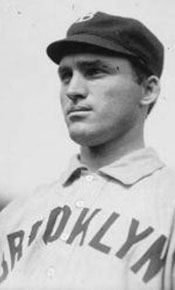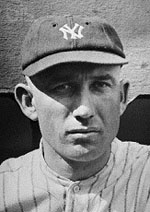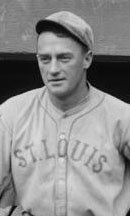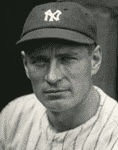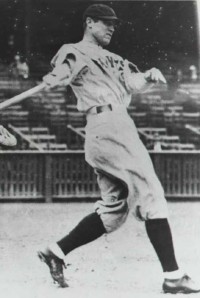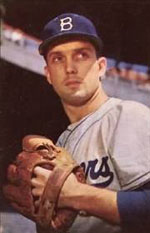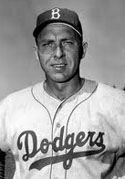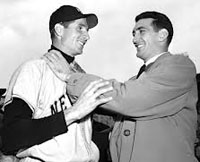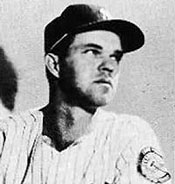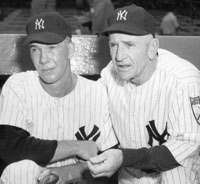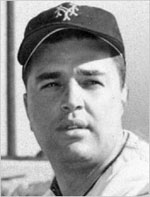|
Jimmy Sheckard was the first ML player of the 20th century to slug two grand slams in one season.
Game One: September 23, 1901 Game Two: September 24, 1901
Brooklyn batters had fun again, battering the Redlegs for 22 hits (4 by Jimmy) in a 16-2 romp. |
|

Cincinnati's League Park II |
|
So the Superbas rapped 48 hits and plated 41 runs in two games . And all this carnage came against only three pitchers, two on the 23rd and poor Bill Phillips alone the next afternoon.
At various times during his career, Jimmy led the NL in triples, HRs, slugging, runs, on-base percentage, walks, and stolen bases. He also forged a reputation as an outstanding defensive outfielder, a marvelous workman in his pasture and one of the surest, most deadly outfielders on fly balls that ever choked a near-triple to death by fleetness of foot and steadiness of eye and grip, to quote the bloated prose of a sportswriter of his day. Sheckard also displayed a temper at times. Consider this item concerning the June 4, 1901, game between Brooklyn and Cincinnati: |
Sheckard disputed a decision by Umpire Cunningham and was ordered out of the game. This infuriated him and he threatened the umpire. The police were called in and took him off the grounds.
Traded to the Cubs in 1906, Sheckard hit .262 but embarrassed himself by his performance in the World Series.
Nevertheless, in 1952, sportswriter Joe Reichler named Sheckard as the LF on the All-Time Cubs team. |
|
The 1905 Boston Beaneaters "boasted" four 20-game LOSERS on their pitching staff, which was only one more than they fielded in '04.
Player-manager Fred Tenney worked his starters hard.
The rest of the staff had only 8 starts. The 135 complete games by the four hurlers was seven more than the National League and American League combined in 2012. Amazingly, the Beaneaters didn't finish last in the eight-team NL. They went 51-103 to edge Brooklyn for 7th place by two games, a whopping 54.5 games behind the pennant-winning New York Giants. Only Young remained with the club the following season when he again earned the "distinction" of being one of four 20-game losers on the staff.
To show another difference in baseball over a century ago, "Big Jeff" Pfeffer stood 6'1" and weighed 185, hardly a behemoth by today's standards. The '06 Beaneaters did "succeed" in occupying the cellar, an incredible 66.5 behind the champion Cubs. Perhaps to break its string of bad luck, the Boston franchise adopted the nickname "Doves" for 1907.
|
|
|
 Patsy Dougherty
|
The 1909 Chicago White Sox hit precisely four HRs for the entire 155-game season.
The Philadelphia Athletics led the league in round-trippers with 21.
To illustrate Dead Ball Era baseball, the White Sox won three consecutive 1-0 games over the St. Louis Browns April 25-26-27 at South Side Park. The two teams combined for just 18 hits in the series. As poor as the '09 Chisox were in power hitting, they still outclassed their '08 brethren by one.
Even in that dead ball era, you would think a team that hit fewer than five HRs would finish closer to the bottom than the top of the league.
The '06 White Sox, called the "Hitless Wonders" because they batted a league-low .230, won not only the AL pennant but also the World Series over their crosstown rivals, the Cubs.
|
|
- 38,000 turned out at the Polo Grounds (which the Yanks shared with the Giants before Yankee Stadium opened in 1923) to see Babe Ruth and Bob Meusel in their first game of 1922 following a five week suspension imposed by Kennesaw Mountain Landis. The Commissioner threw the book at the two Yankee outfielders for defying his ban on barnstorming tours after the '21 season.
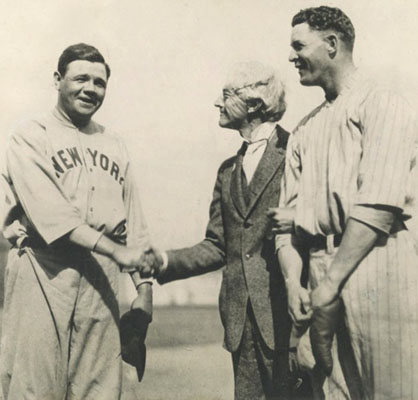 Babe Ruth, Judge Landis, and Bob Meusel in happier times in 1921.
With two out and none on in the ninth and the home team leading 2-1, many began heading for the exits.
Then the floodgates opened.
That ended the carnage.
|
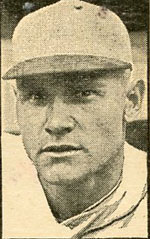 "Baby Doll" Jacobson |
|
Tales from the Dodger Dugout, Carl Erskine (2000) The Brooklyn Dodgers lineup was explosive and could score a lot of runs, and it did on August 31, 1950, against the Boston Braves. The final score was 19-3. Gil Hodges had the biggest day, hitting four HRs. I always felt a special bond with Hodges because we were both from Indiana and had been scouted by the same Dodger scout, Stanley Feezle. Maybe that's why I had my biggest day at bat, getting four straight hits – not bad for a .150 hitter. Each of Gil's blasts was crushed. Here's how mine went: The first was a sacrifice bunt that the Braves let roll, hoping it would go foul. It didn't, and I beat it out. The second hit was a broken-bat single over 1B. The third was a bloop up the middle, barely far enough to reach the OF grass. The fourth was a routine ground ball to Bob Elliott at 3B. As Bob went down to field the ball, it hit a rock and sailed over his head. All four of those hits laid end to end wouldn't have made one of Gil's homers. However, the next day in the box score, those four hits looked like four line drives.
|
|
After surrendering the "Shot Heard 'Round the World," Ralph Branca decided to come out of semiseclusion and attend Game 6 of the 1951 World Series at Yankee Stadium.
The game Branca saw that day bore eerie similarities to Game 3 of the NL playoff a week earlier.
|
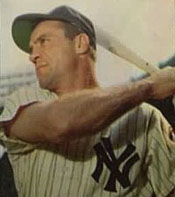 Hank Bauer |
Al Lopez, one of the most intelligent and successful of big-league managers, played under Casey at Brooklyn and Boston in the 1930s, managed against him in the AL in the 1950s (and was the only manager to interrupt Casey's flow of pennants) and was his good friend. Yet Lopez once said, "I swear, I don't understand some of the things he does when he manages. I've tried to figure them out, but they just don't make sense." One of the more famous of such dubious moves occurred in the 1951 World Series ... In the final game ... the Yankees were leading 4-1 in the ninth inning. ... The Giants had the tying runs on base, the winning run at bat, and their two most powerful hitters, Monte Irvin and Bobby Thomson, both right-handed batters, coming to the plate. John Sain, a right-hander, had been pitching for the Yankees, but Stengel took him out after the Giants loaded the base. Instead of following standard baseball theory by bringing in another right-hander to pitch to the right-handed Irvin and Thomson ... Stengel stunned baseball people by calling on an undistinguished left-hander named Bob Kuzava, who had not previously appeared in the Series. ...
Stengel's tactic had worked - somehow. Three hard-hit balls, but the Giants had not been able to tie the score ... No one has ever been able to fully decipher Stengel's tortuous reasoning for bringing in Kuzava. Perhaps he had anticipated that the Giants' right-handed batters would be likely to hit fly balls that would be caught without too much trouble in the spacious Yankee Stadium outfield. But how could he be so sure that not one of those fly balls would go through for a double or a triple or reach the seats for a HR?
Besides, ground balls are what you want in a situation like that, grounders that will let your infielders come up with a double play while a run is scoring, grounders that, even if one did get through into the outfield for a base hit, would most likely score only one run, not the devastating three or four that a long hit might bring across. Stengel could point out that Kuzava had the best earned-run average on his staff that year and had excellent control, a desirable talent when the bases are full. But even so, a lefty? And, after all, he did give up three hard-hit balls. ...
The only fair conclusion is that Stengel sensed something deep in the information bank of the runaway computer that was his brain, some retrieval of data on what the Giants' right-handed batters had done or could do combined with what his left-hander had done or could do, tied in with the lovely spaciousness of the outfield in Yankee Stadium and the cushion of a three-run lead. Whirr, bzzzz, click-click-click, and Kuzava was the answer.
|
Clem Labine compiled a 77-56 record in 13 ML seasons with 96 saves. He was pathetic at the plate, hitting only .075 in 227 AB.
|
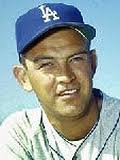 Clem Labine |
